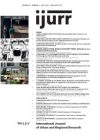Villages‐in‐the‐city (chengzhongcun) as distinct urban spaces in Chinese cities have attracted a lot of scholarly attention, and the term has been variously interpreted. The term ‘urban village’ was initially borrowed and applied to describe this urban phenomenon. While the term in a Western context refers to a planned neighbourhood that features good urban planning and design, the question posed in this essay is: are villages‐in‐the‐city the Chinese equivalent of urban villages? Furthermore, within China, villages‐in‐the‐city are always regarded as migrant enclaves, no different from Zhejiang village or Xinjiang village in Beijing. Are they the same kind of settlement? A primary aim of this essay is to reassert the differences between villages‐in‐the‐city and urban villages that have developed in the United Kingdom. A secondary objective is to explore the variations between villages‐in‐the‐city and Zhejiang village. Through investigating the variations between these urban morphologies, this study attempts to fill gaps in the current literature and hence clarify the misconceptions and confusion about Chinese villages‐in‐the‐city.
Details
Written by:
HIM CHUNG
Digital Object Identifier (DOI)
10.1111/j.1468-2427.2010.00979.x
About DOI
Read full article as PDF
Read full article as HTML
See the references for this article
